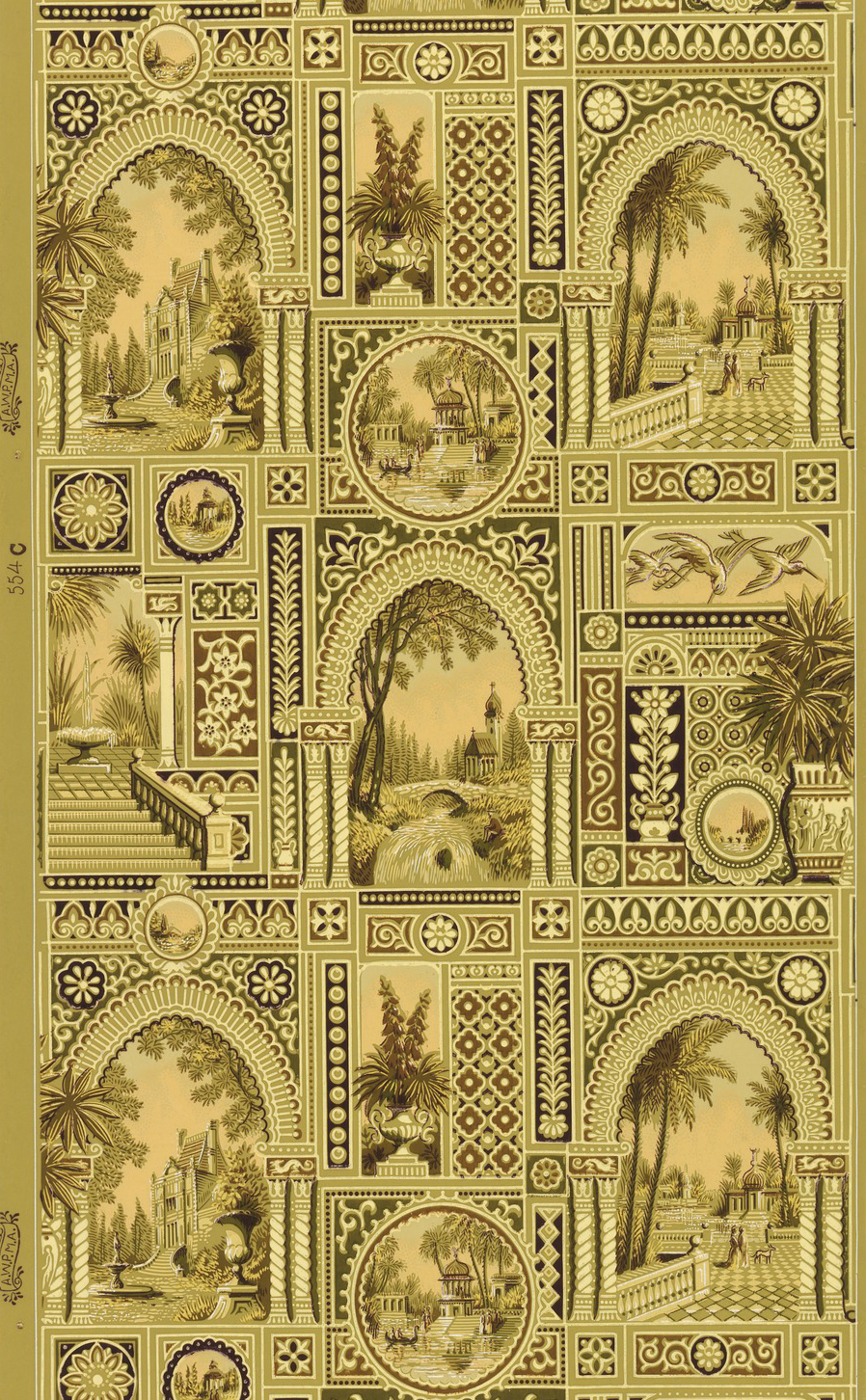Vertically stacked archways and medallions made of Moorish tiles frame views of architecture from far off lands in this sidewall from the last quarter of the nineteenth-century. An Indian Gazebo, Turkish Mosque, French Chateau and even an onion-domed Russian church all make appearances. Palm trees, flocks of storks, waterfalls and elegant stone staircases add to the exoticism. The design is machine printed in earthy tones of maroon, peach, olive, yellow and brown. These sober, unobtrusive colors are popular in wallcoverings from this era.
This very internationally-inspired design was produced by the very Anglo-sounding American Wall Paper Manufacturer’s Association, who operated between 1879 and 1887. The eclectic references to exotic lands are typically seen in American and English decorative arts of the Aesthetic Movement. The Aesthetic Movement celebrated “art for art’s sake,” meaning that the most important quality of a work was its beauty, rather than its effective representation of social or political themes. Commodore Perry’s “opening” of Japan to the West in 1853, followed by the publication of Owen Jones Grammar of Ornament in 1856 gave westerners new access to the arts of Asia, which were used as the inspiration for many “aesthetic” designs. Flat, conventionalized depictions of flora and fauna are hallmarks of the style.
In this sidewall, the stylized tile borders are right on point with the aesthetic trend, but the repeating scenes of architecture and potted palms are rendered quite realistically, and are clearly a holdover of earlier nineteenth-century tastes. It appears the manufacturers were aware of the current aesthetic inclinations, but not quite willing to give up on high Victorian designs that were fashionable in the preceding decades.
Anna Rasche is a student in the History of Decorative Arts & Design graduate Program at the Cooper Hewitt, and is a Master’s Fellow in the Wallcoverings Department.
